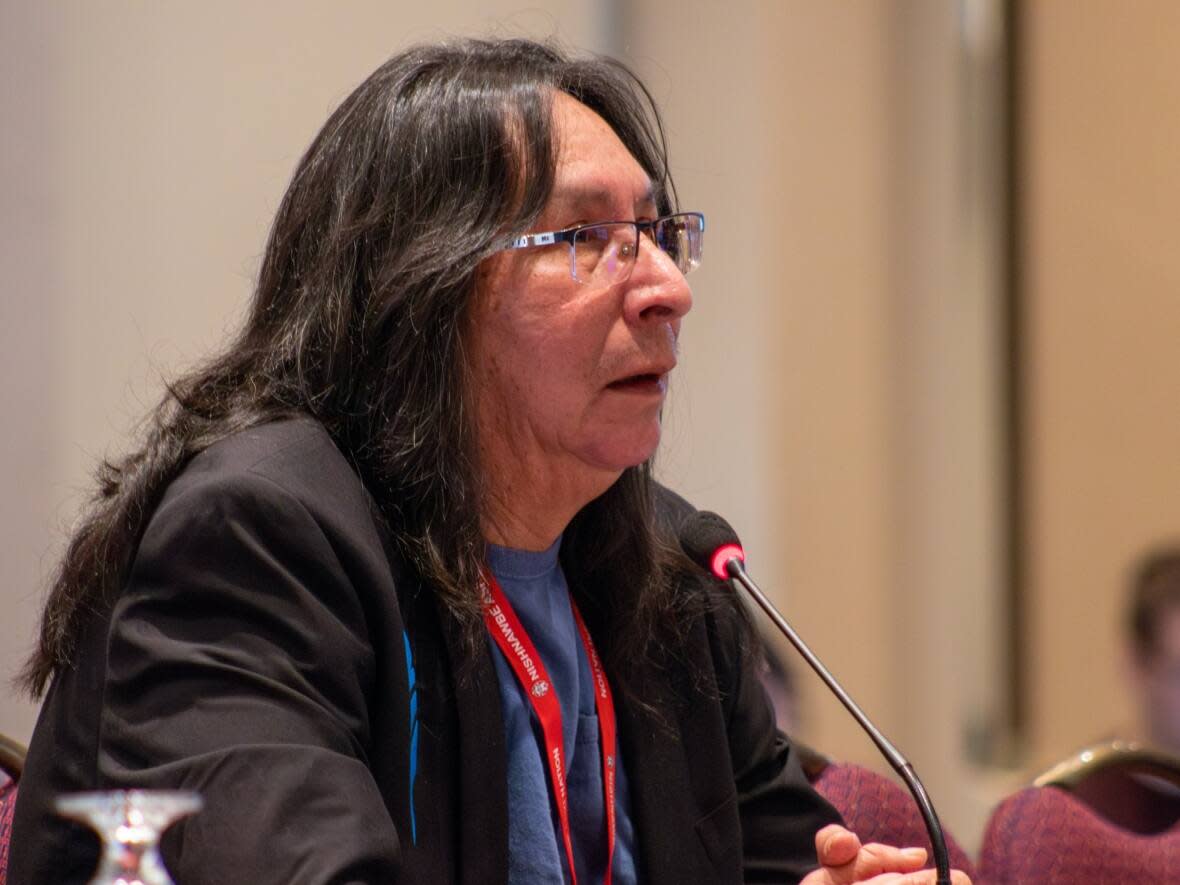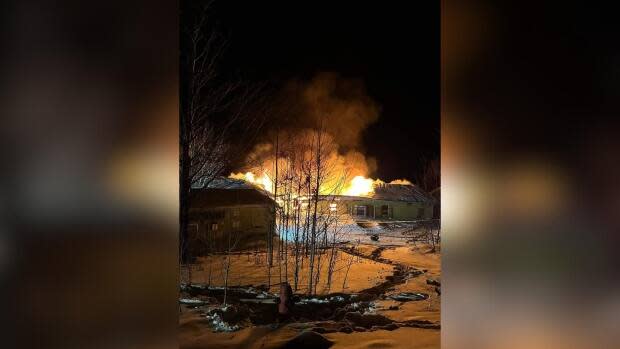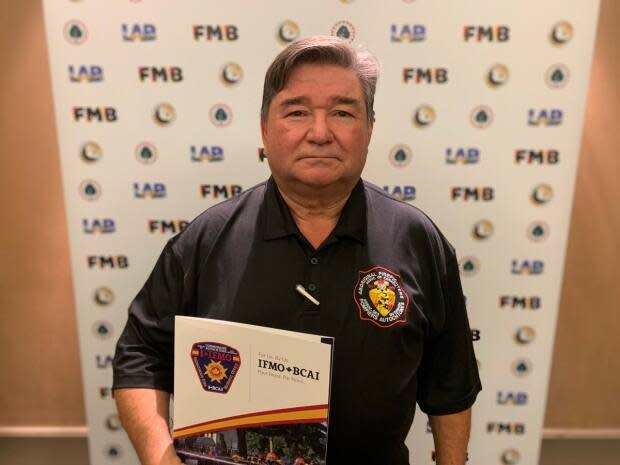Still in crisis, Cat Lake First Nation awaits temporary replacement for nursing station razed by fire

Efforts are underway to get a temporary nursing station built in Cat Lake First Nation in northwestern Ontario, but as spring quickly approaches, it's a race against time to get supplies to the remote community using the winter road.
The Margaret Gray Nursing Station "appears to be a total loss" from the Saturday night fire, according to the Nishnawbe Aski Police Service. No injuries were reported and the cause of the fire hasn't been determined.
About 650 people live in the Ojibway community about 440 kilometres northwest of Thunder Bay along the Albany River.
With Cat Lake already under a boil-water advisory since Feb. 26, efforts to save the health-care building caused the water reservoir to dry out. On Sunday, Chief Russell Wesley declared a state of emergency that remains in place.
Wesley said a task force has been created to ensure Cat Lake's immediate needs are met during the crisis.
"There's a lot of effort to resolve this situation very quickly," said Wesley, speaking at a news conference, on mining, that was unrelated to the fire.
This is the third significant fire affecting First Nations in northwestern Ontario. The others were:
The provincial and federal governments have committed to helping Cat Lake.
"The Ministry of Indigenous Affairs is working with the community of Cat Lake First Nation, provincial and federal government partners to better understand the immediate needs as a result of the nursing station fire," said spokesperson Curtis Lindsay in an email to CBC News on Monday.
A fire investigation led by the Nishnawbe Aski police's crime unit and Ontario's Office of the Fire Marshal is ongoing.
Plans for temporary nursing station, virtual care
Federal Indigenous Services Minister Patty Hajdu said Ottawa will help in three phases:
Immediate crisis support, including providing bottled water to community members, setting up the healing centre as an interim health-care base and ensuring an Ornge air ambulance is accessible for medical evacuations.
Providing modular buildings to be used as a long-term, temporary nursing station.
Developing plans to build a new, permanent nursing station.
The modular buildings are being transported along the winter road before the ice disappears, though that could come suddenly with shifting temperatures. In January, Nishnawbe Aski Nation Chiefs declared a state of emergency over winter road conditions due to the unusually warm weather.

At Tuesday's news conference, Wesley commented on the increasingly hazardous conditions of the winter roads amid climate change, but said his community has had to delay planned repairs to its bridges for another year.
"We just couldn't meet the timelines and the requirements of the provincial government in terms of the permitting," he said. "Hopefully over the course of this summer, we will be able to get over the permitting issue and get those bridges repaired."
On Monday night, he said some people were transported out of Cat Lake for specialized medical services, including cancer care, diabetes treatment and addiction services.
Nurses from Sachigo Lake have come to Cat Lake to help its nurses, Wesley said. There are also plans to provide more virtual care to community members.
Last week, Cat Lake signed a memorandum of understanding with two Finnish companies, including 73-Health. The Finnish telemedicine company will provide Cat Lake members with long-distance diagnoses.
Focus on fire prevention
Hajdu said she recognizes the fire services challenges facing remote communities like Cat Lake.
"It could be anything from having the right equipment to having a place to store the equipment, to having a trained and renewed volunteer firefighter service," she said in an interview with CBC News.
She pointed to the federal government's First Nations Fire Protection Strategy, developed last year, as a key way the government can work with partners to build First Nations' capacity to prevent and respond to fires.

People living in First Nations are 10 times more likely to die in a fire than those living elsewhere in the country.
"With statistics like that, we're compelled to do something differently because obviously what we've been doing has not been as effective as we want," said Arnold Lazare, director of operations for the Indigenous Fire Marshal Service, which is part of the National Indigenous Fire Safety Council.
He said several systemic issues put First Nations at greater risk of fatal fires:
Lack of mandatory building codes.
Overcrowding due to housing shortages.
Shortages of water, firefighting equipment and trained people.
"That's one of the reasons that we are focusing on fire prevention and trying to ensure that each household has at least one working smoke alarm," Lazare said.
The council has several programs designed to achieve this, including tools to assess fire risks within communities and individual households, and assessments of First Nations' fire departments and their capacity to respond to emergencies.
In his home of Kahnawà:ke, Que., Lazare said the community has taken a proactive approach to fire safety, and it's made a big difference.
"We're very fortunate and our attempt would be to replicate that in other communities."

